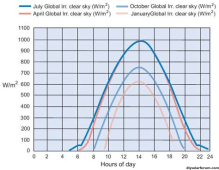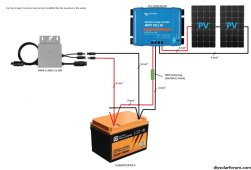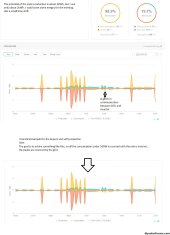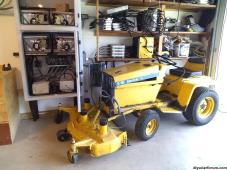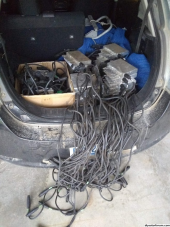Just found this thread, still reading the whole thing. For 2-3 years now, I've been using old m190/m210 microinverters to discharge 10s and 14s Leaf cell battery banks now totaling about 30kwh, runs everything for a night or maybe two, depending on cloudy days. They are AC coupled into SMA SI6048US main inverters w/ FLA forklift batteries, and normally the whole house is off-grid behind those inverters. Wintertime or string of cloudy days, need some from the grid off-peak, but on-peak 11a-7p always off-grid even if have to take some out of the FLA.
Most of the solar is AC coupled with microinverters, and some goes direct to the 14s lithium battery bank.
The goals with the battery microinverters are to minimize the cycling of the lead batteries, keeping them mostly full & floating, fine for any big loads the house may throw at it, and use these other voltage and chemistry packs. A RPi talks to the main inverters, battery bmss, etc, and decides how many microinverters to enable, via wifi relay boards that switch one of the 240v legs. The other 240 leg is normally connected, as is the DC input side. The battery banks have multiple paralleled packs each with a BMS. The RPi keeps the discharging within the range of the BMSs which normally don't trip. One pack is charged direct from DC solar charge controller, and the 10s pack in an Electrak tractor has 2x 120v chargers which the RPi turns on when there's enough solar. I have a 120v 40?w chandelier bulb as a precharge circuit for the DC side of microinverters, before closing the DC breaker going to the microinverters, wait until the lightbulb has gone off. Don't wait too long though, as the micros try to start up like it's morning and there's sun out, then the bulb starts glowing again.
I was able to edit the grid profiles of the m190/m210 micros to restart after 10s of seeing 'grid', using the older white oval Envoy.
So, yeah, hook batteries direct to microinverters, it works fine. A battery is like a huge solar panel, at least for lithium batteries, a microinverter goofing around doing MPPT is not changing the voltage, it just runs at max output of the microinverter. Switch the AC side to control them individually, most any tiny relay can handle 240v AC at less than an amp, for these ~200w microinverters.
I have a new question: I just picked up a pair of 9s Leaf modules that I'd like to use, each with it's own BMS. I'm wondering about some sort of controllable (pwm, analog or serial data) DCDC converter that I could piggyback these 9s modules on the main inverter DC bus (as if it was a solar charge controller directly charging the FLA battery, which I used to do). Otherwise, need to set up more microinverters to discharge this pack, and either an AC to DC charger from excess solar. Anyone have ideas about how to make use of yet another voltage battery bank? Thanks!
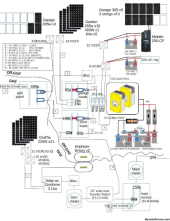

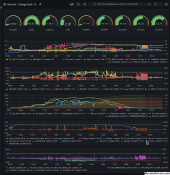
Too many more pictures:
https://photos.app.goo.gl/q1euFhioH266nPvW9


